This little fish is what we came here for. All the way from Switzerland to Greenland. I say little, but she is actually rather large for a stickleback. Most are only about 5 cm long and weigh 1.5 g, so at 8 cm this one is a Leviathan. Gasterosteus aculeatus, the threespine stickleback. If you are an ecologist or evolutionary biologist you have undoubtedly heard of them before, but for those of you who haven’t spent years of your life measuring tiny fish, here is a bit of background information.
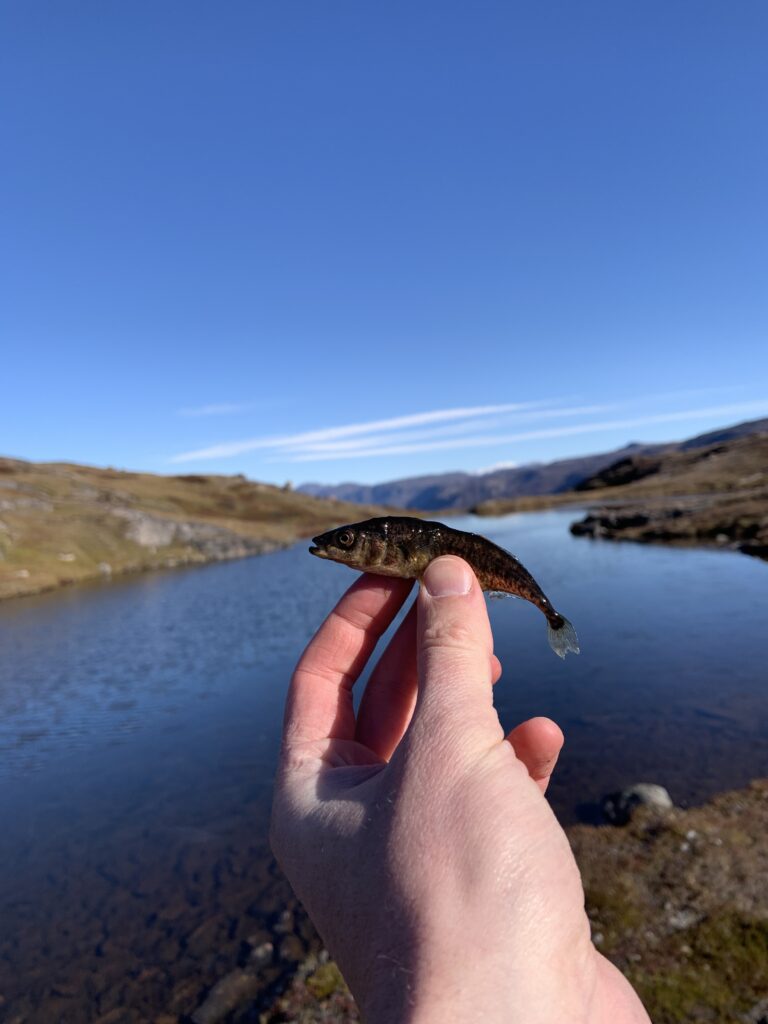
Threespine stickleback is a species of fish that is found throughout marine and fresh waters of the northern hemisphere. The species evolved in the ocean, but has repeatedly adapted to colonise freshwater habitats across Europe, North America and Asia. In most cases this colonisation took place at the end of the Pleistocene (glacial period), some ~11,700 years ago, after the retreat of glaciers from much of Earth’s northern landmasses. The situation in Greenland is similar. Glacial retreat and isostatic rebound have opened up the landscape, lifting it out of the ocean and creating freshwater lakes, rivers and streams by which stickleback have been able to establish. They are only one of two species of freshwater fish in Greenland, the other being Salvelinus alpinus, the Arctic char, which often has a healthy appetite for stickleback.
But why are we interested in studying stickleback here? Well for one, the lack of complexity in the food web makes it a little easier to address the different selective pressures that drive stickleback evolution, but the young age of the landscape (and its fishy inhabitants) also helps. We know an upper bound for the time since colonisation, as there was no habitat available for freshwater fish to colonise when the land was covered by ice. As you can see in the next photo, southern Greenland is dotted with bodies of freshwater. Some are connected by streams or occasional floods, while others have become cut off from each other (and the ocean) completely. As we move inland from the coast, and upwards in elevation, we can use this as a proxy for time since colonisation of stickleback. Older, more geographically isolated populations are typically higher up. By comparing populations of different age, and in different stages of connectivity to the fjords, we can gain insight into the adaptations that fish evolve while colonising freshwater habitats, and the timescale over which they occurred.
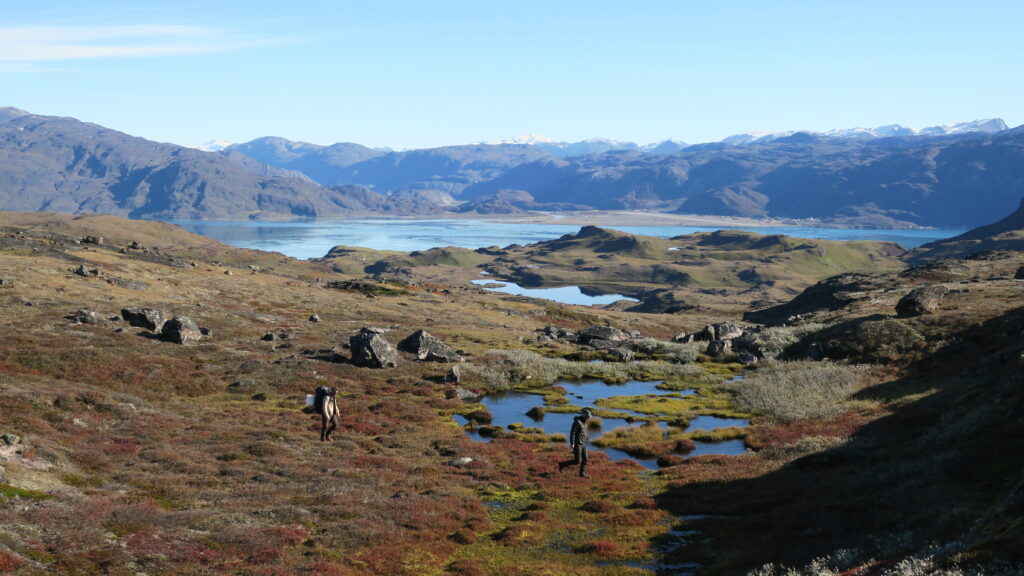
In this project in particular, I am interested in a gene called Fatty Acid Desaturase 2 (FADS2 for short), that allows stickleback to endogenously synthesise long chain omega-3 fatty acids from their diet. In marine habitats, omega-3 fatty acids like docosahexaenoic acid (DHA) are abundant, while in freshwater they are much more scarce. This means that any marine fish species colonising freshwater will be faced with a situation of nutritional mismatch, and in order for populations to survive, grow and reproduce they must adapt. In this case, stickleback have done so repeatedly around the globe. Previous work has shown that freshwater populations of stickleback have multiple copies of the FADS2 gene, and this helps them synthesise more DHA from poor quality diets. So here in south Greenland, where stickleback populations are all <11,700 years old, I wanted to explore how these young populations have adapted, and whether the FADS2 gene has played a role. To do this, we sampled several transects from the fjord to high elevation populations throughout the Narsaq peninsula.
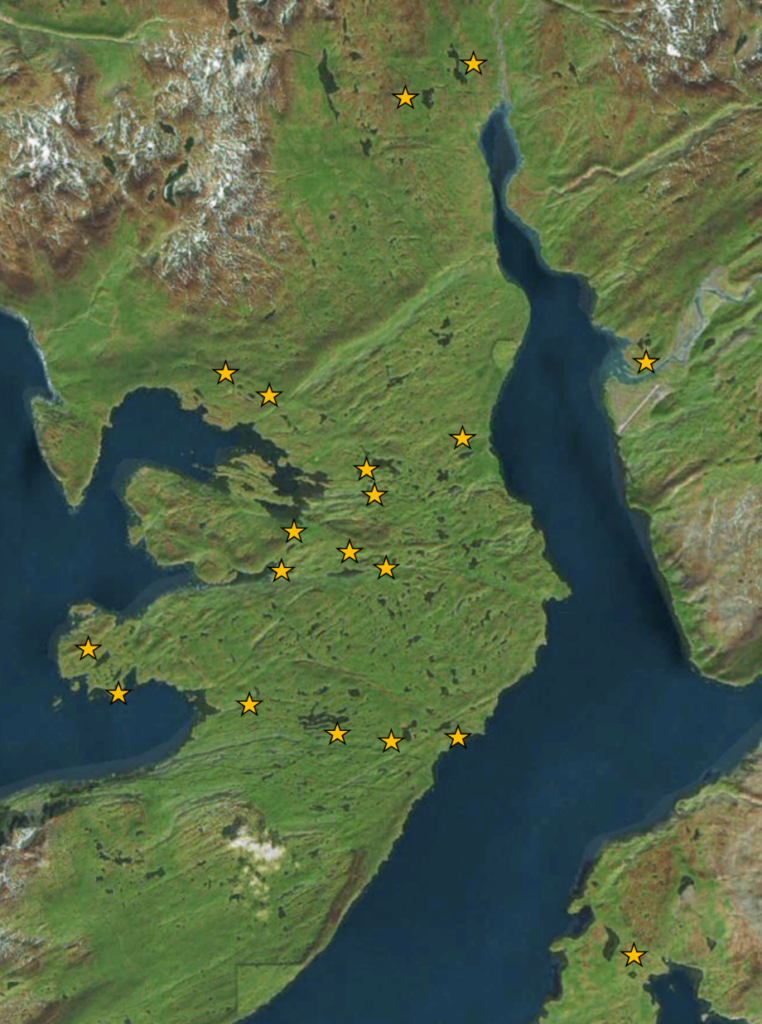
Our research team was composed of Dr. Cameron Hudson (left), Dr. Ryan Greenway (middle) and Dr. Blake Matthews (right) from Eawag. While Blake and Ryan have been to Greenland previously, this was my first expedition and even as a Canadian, my furthest trip north.
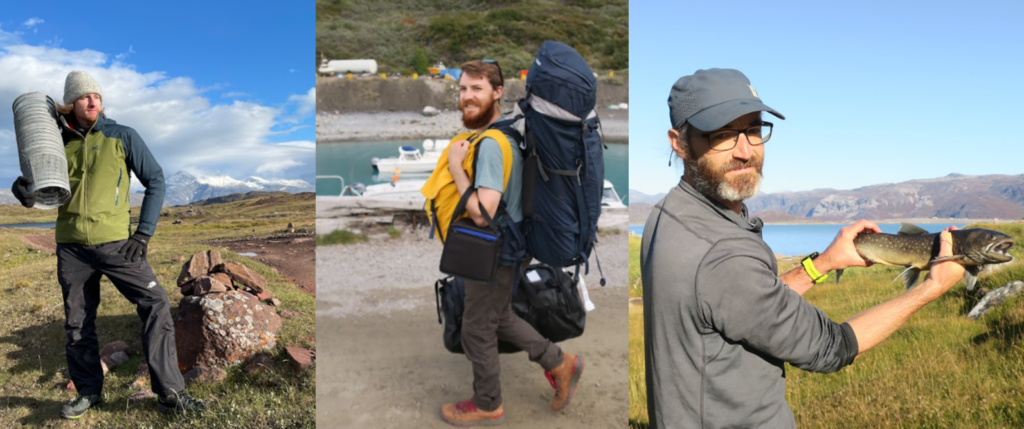
As with most things in 2020 and 2021, the COVID-19 pandemic complicated our efforts. Our original plan was to embark on a trip in June of 2020, but after several rounds of cancellations and rescheduling, the trip finally landed in September 2021. It meant that we were there later in the season than I had originally intended, but if you set enough minnow traps, you will catch plenty of stickleback.


Cameron Hudson preparing minnow traps, and an example catch after thirty minutes of trapping. © 2021 Blake Matthews, all rights reserved
It also meant that we were present for the onset of the Aurora Borealis, something that I have always wanted to witness, so I found myself setting traps by day and taking long exposure shots while frost formed on the grass around me at night.
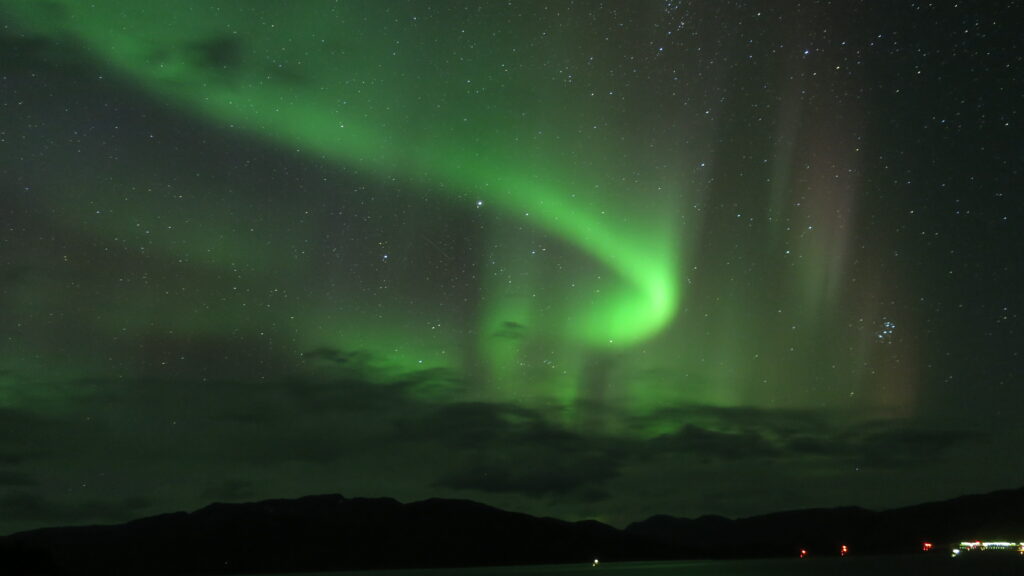
For most of our time in Greenland we were based out of the Illunnguujuk Hostel in Qassiarsuk (shown behind me in the above photo). Our hosts graciously provided us with a field vehicle, and allowed us to convert one of their old sheep barns into an impromptu field sample processing station. Since we were in the area during the transition between summer and autumn, this meant that we were present for the annual livestock roundup. Many of the local farms were in full action, bringing all of the sheep down from the hills before the snow started to fall. It was remarkable to witness, and this also meant that we had a suite of sheepdogs to accompany us during our work.
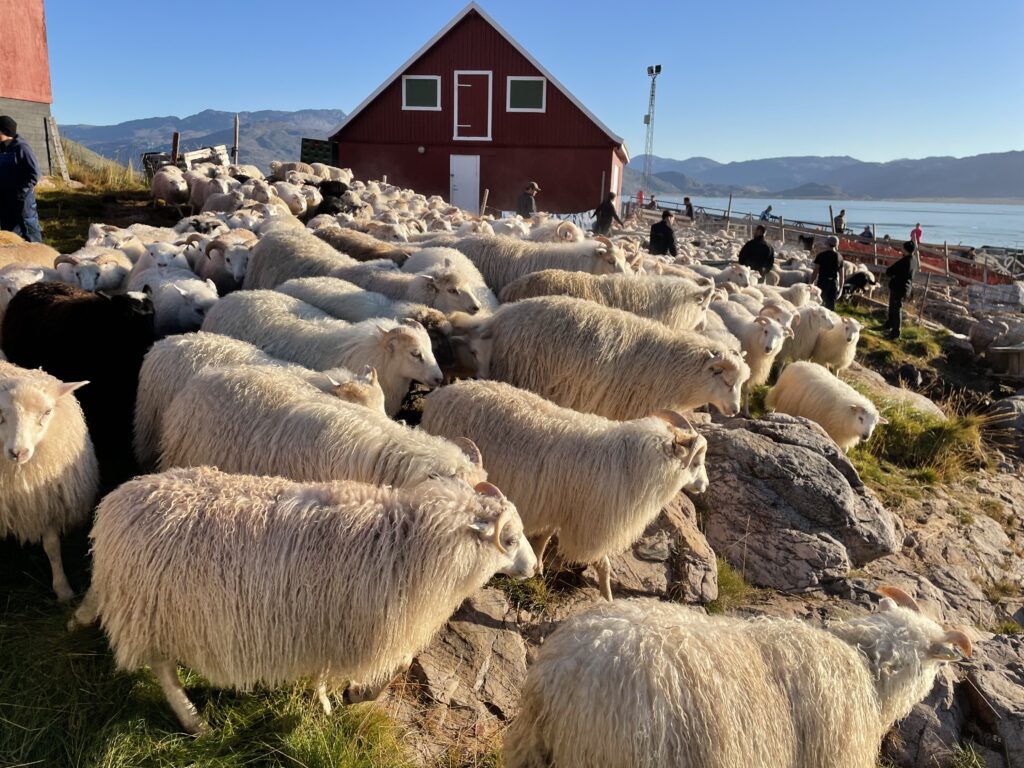
Back to the fish though – here is what a typical field site looks like in south Greenland, and although the lakes may look similar to one another, the fish are phenotypically quite variable.
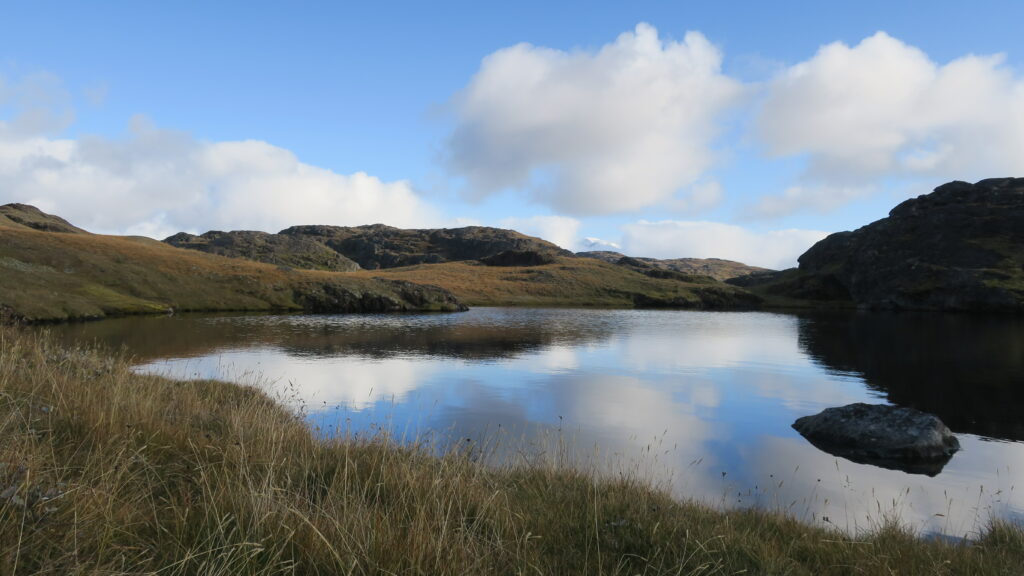
They come in all different shapes, colours, and sizes. This is another attribute of the stickleback that has attracted the attention of ecologists and evolutionary biologists for so long. Depending on the habitat availability, prey community, predator presence, and other limnological conditions, stickleback adapt to freshwater in different ways. Since many of the populations that we sampled are geographically isolated from each other, I was fascinated by the pronounced variation between them. It was almost as if each lake had its own form of stickleback.
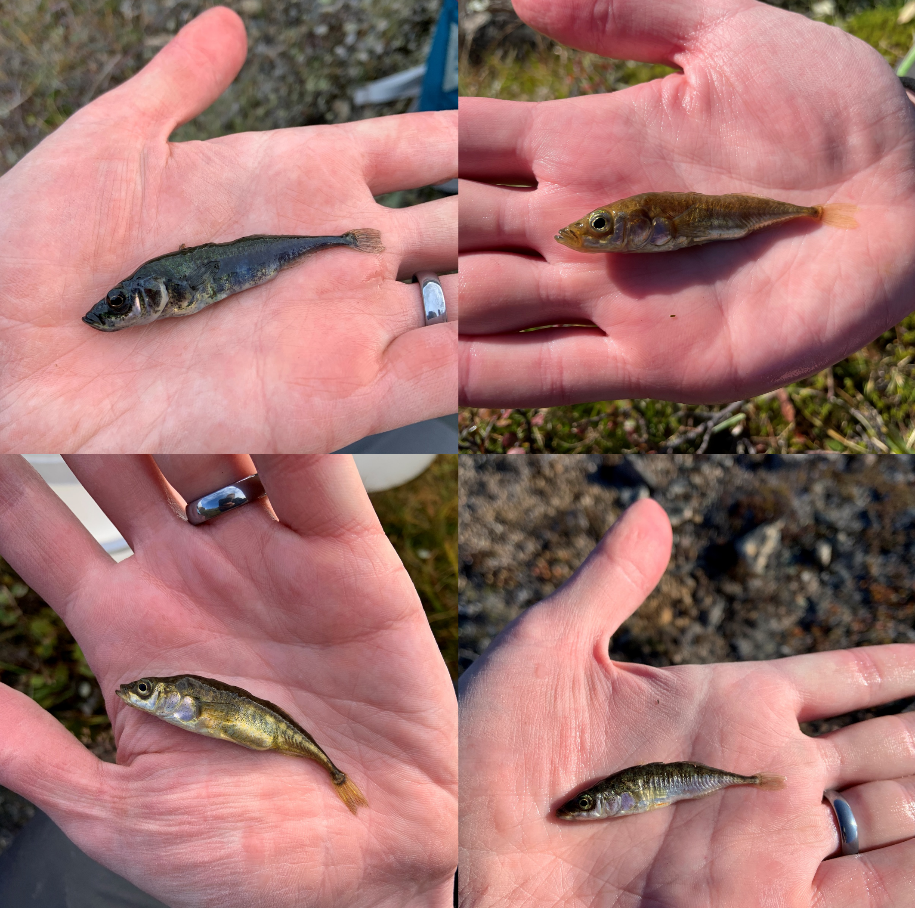
It is not surprising then, that the fish themselves have a profound impact on the invertebrate community in the lakes that they occupy. In the two photographs below, we can compare the plankton community between a lake with no fish (left), and a lake with a high density of stickleback (right). The striking red colour of Leptodiaptomus minutus, a freshwater calanoid copepod, is produced by a pigment known as astaxanthin that acts as a UV protectant. This pigment also makes them very visible to hungry stickleback, so they too must adapt when stickleback colonise the lake, by producing less of the pigment … or in the case of our photo on the right, get eaten entirely.


Zooplankton samples collected from a lake with no fish (left) and a lake with stickleback (right). © 2021 Cameron Hudson, all rights reserved
Our time in Greenland was brief (three weeks), but our days were full and our sampling was extensive. I came back to Switzerland with more samples than I was expecting, so I have some busy days in the molecular lab ahead of me. We were also accompanied by fellow Eawag researchers from Dr. Jakob Brodersen’s research group who are studying the adaptive radiation of Arctic char in the region, and their company was much appreciated! Thanks to Team Char, the Illunnguujuk Hostel (who I am also incredibly thankful to) was filled with laughs, amateur shepherds, and often, fresh fish for dinner.
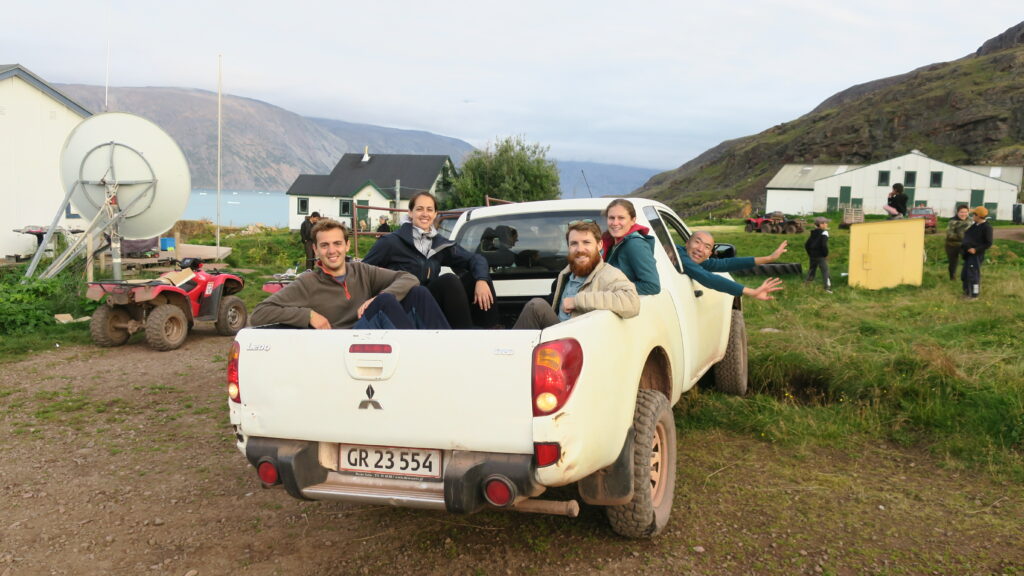
Now that I have returned to Switzerland, I plan on spending the next few months quantifying FADS2 copy number in the fish that we collected, using gas chromatography to produce fatty acid profiles from fish muscle tissue, and photographing stickleback to compare their morphologies. It means a lot of time spent indoors, so I’m grateful for the days spent under the Greenlandic sun.
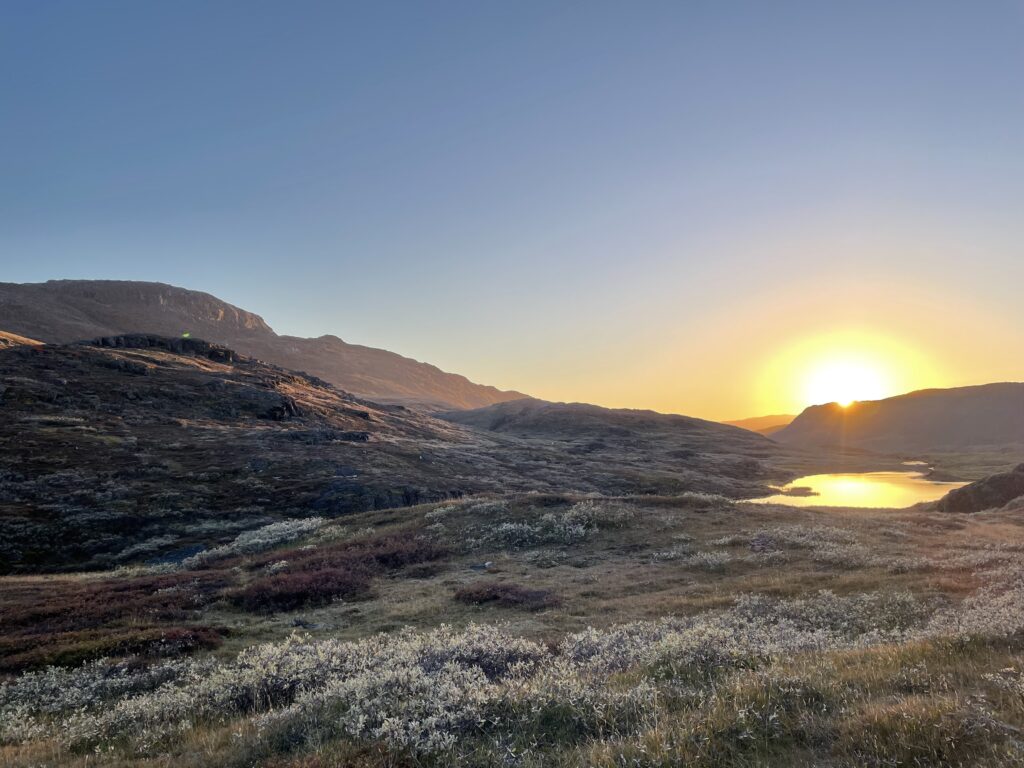
Cameron Hudson is early-career researcher at the Eawag. His field trip took place in summer 2021 with financial support from a Polar Access Fund grant.
Header photograph: Team work on the side of a Greenlandic lake. © 2021 Cameron Hudson, all rights reserved